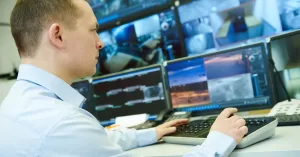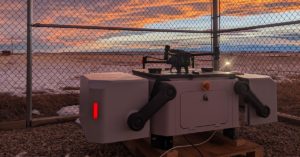Companies focused on safety first have already well understood the benefits of leveraging drones. And, with increasingly advanced sensing and imaging technologies, it is now possible to efficiently deploy unmanned aerial systems and ground robots in a wide range of oil and gas applications, including inspection, monitoring and maintenance tasks.
Common examples, already deployed at many sites, include:
Pipeline inspection: Drones are already inspecting pipelines for damage, corrosion, leaks or other defects. It is a good alternative to helicopters, not only because of the costs but also because it helps getting one step closer to net zero requirements.
Gas leak detection: Drones equipped with gas sensors are used to detect gas leaks in pipelines, storage tanks or other facilities. Advanced systems can even monitor abandoned wells autonomously so that workers can focus on active wells.
Infrastructure monitoring: Drones and ground robots are used to monitor the condition of oil rigs, platforms, or other infrastructure, identifying proactively any issues that may require future maintenance or immediate repairs. It is also very convenient to manage remote sites that are difficult to access or where workforce availability is a challenge.
Environmental monitoring: Drones are used to monitor the impact of oil and gas operations on the environment, including water quality, air quality and wildlife populations. A relatively new tool that opens new opportunities to take environmental and reclamation initiatives to the next level.
Water sampling: Drones equipped with water sampling payload are flown over bodies of water, such as rivers, lakes or oceans to collect water samples at various locations. It is also a safer and more efficient way to collect tailing ponds samples.
Emergency response: Drones and ground robots are used in emergency situations, such as oil spills or gas leaks, to quickly assess the situation and develop a response plan. When every minute counts, quick access to relevant information can make the difference between a well-managed situation and a disaster.
Overall, using drones and ground robotics in oil and gas offers several benefits, including:
- better efficiency
- reduced costs
- increased safety
- improved sustainability
By automating or remotely controlling tasks that would otherwise require human intervention, drones and ground robots can help minimize the risk of accidents or injuries, while also improving the accuracy and speed of data collection and analysis. The trend is really to optimize the entire data workflow from autonomous data collection to relevant actionable insights timely and appropriately delivered by artificial intelligence.



